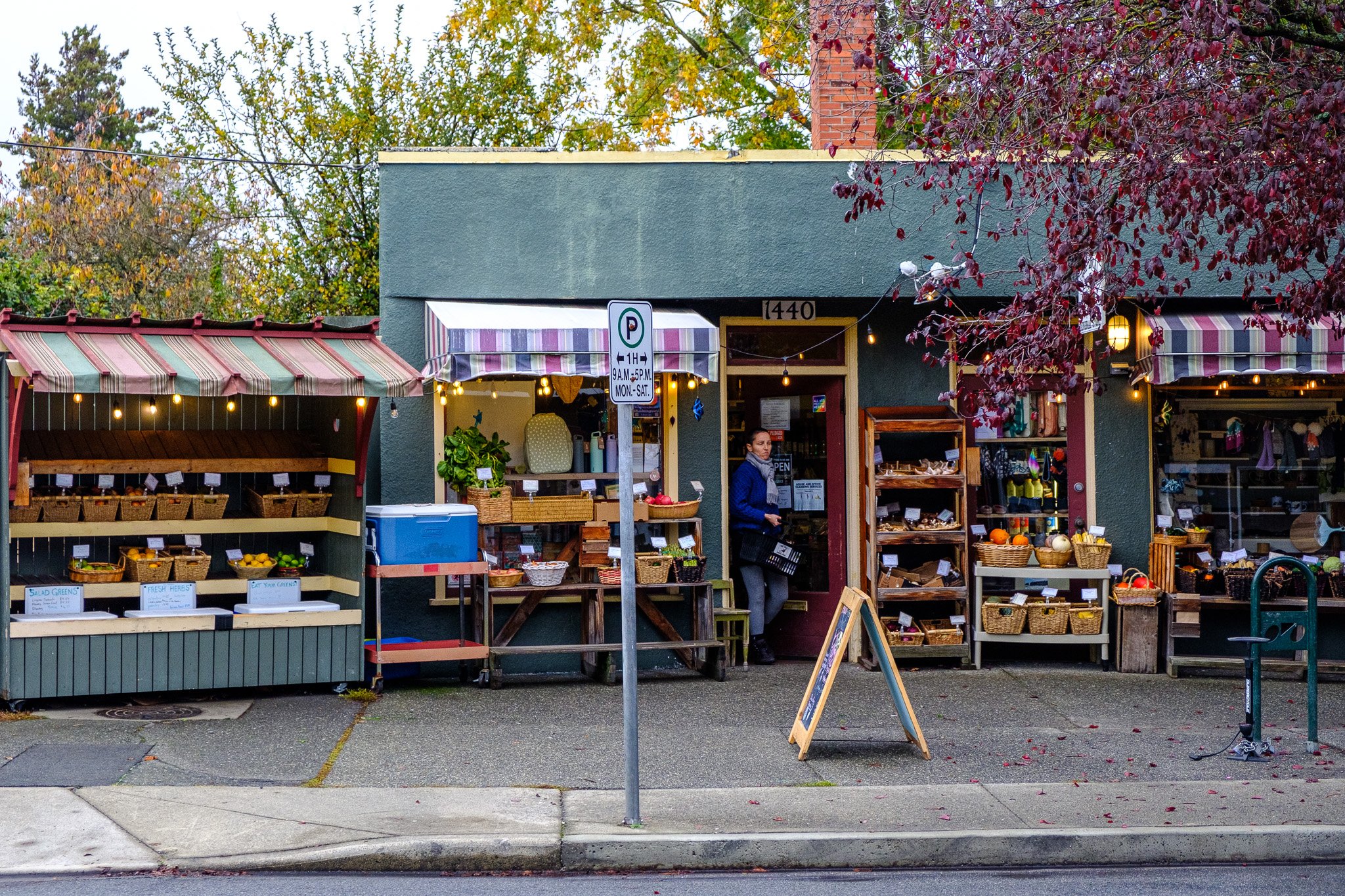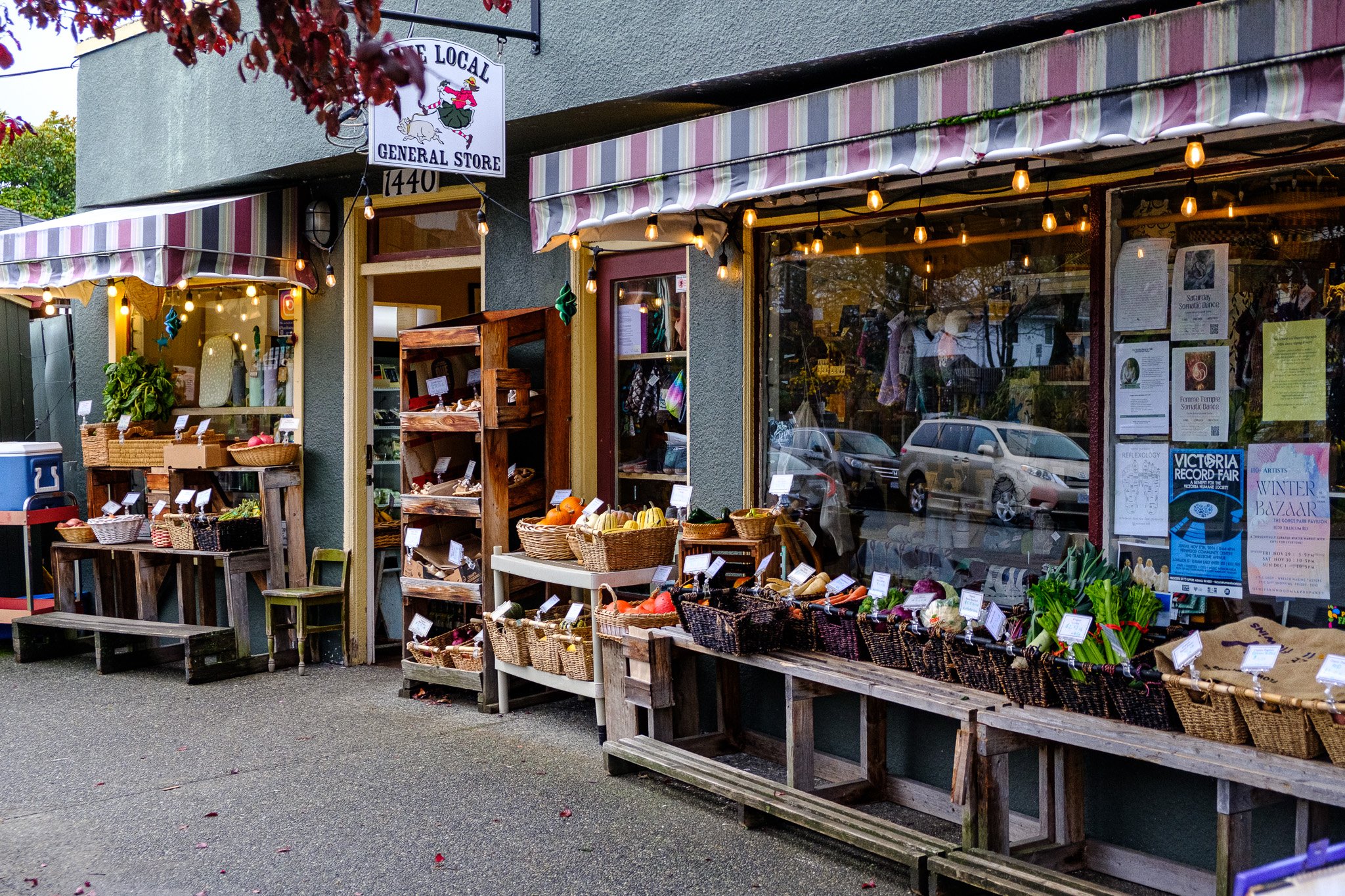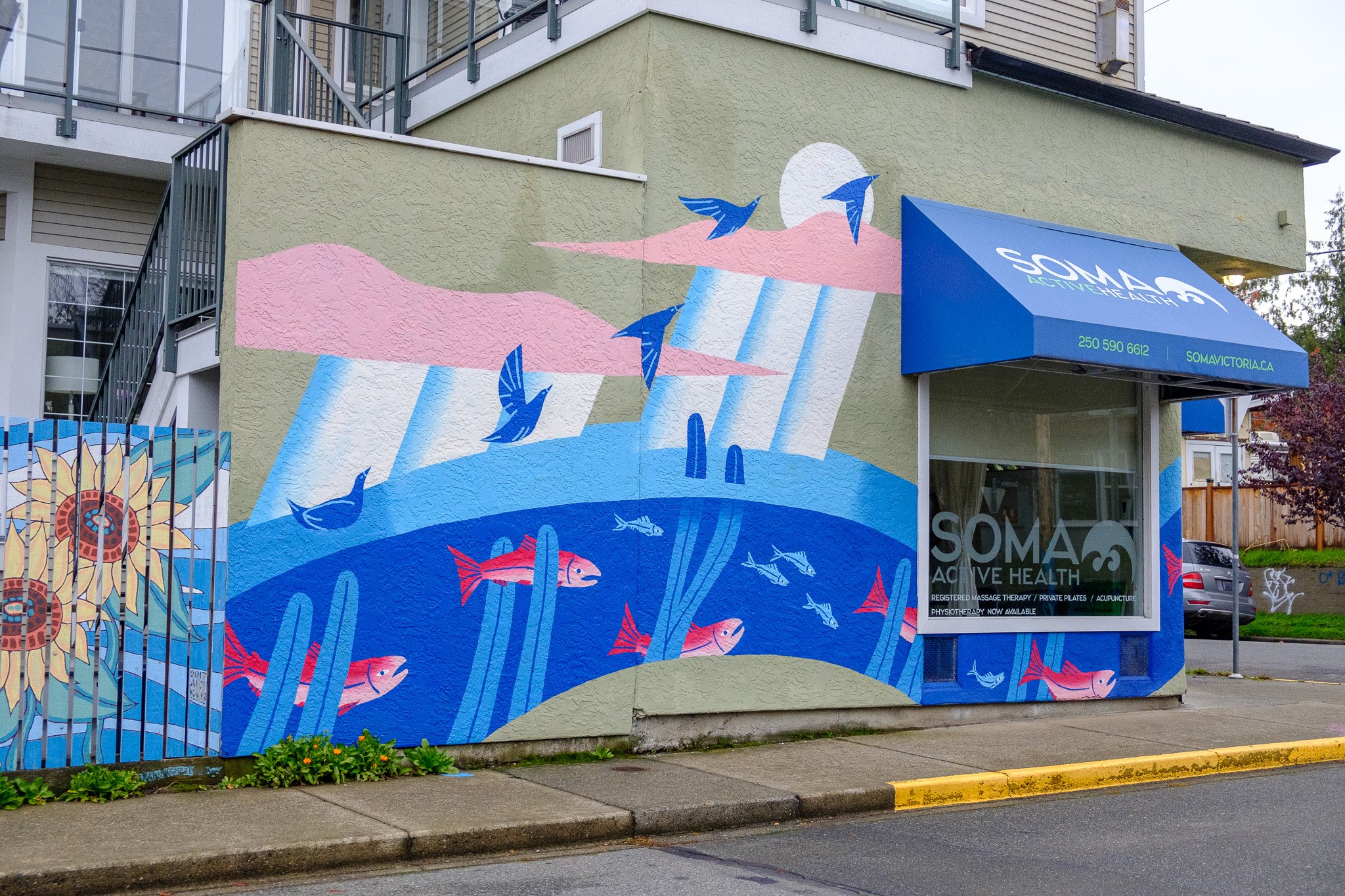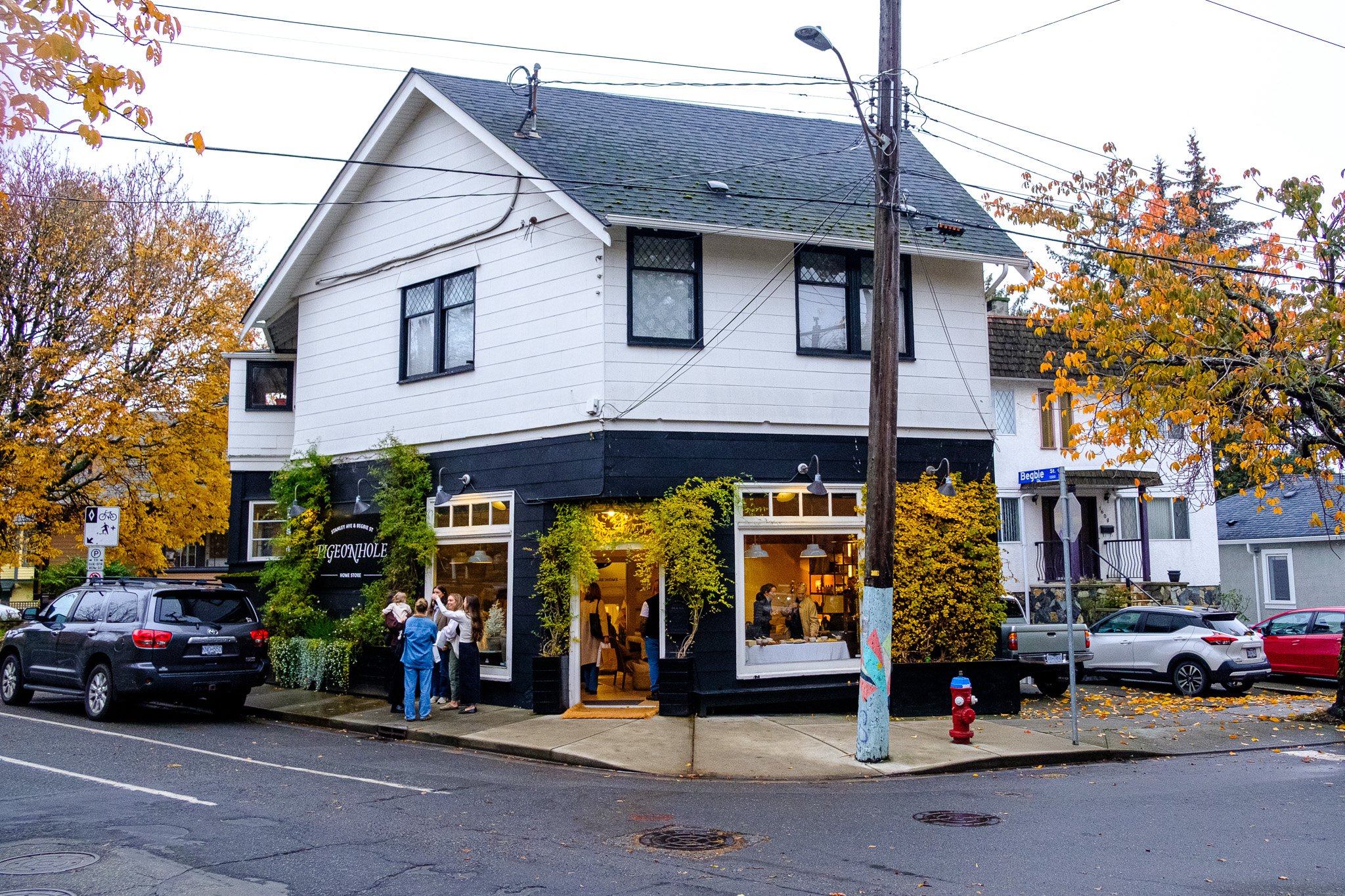The Case for More Small Scale Retail and Corner Stores
I recently spent a week in Portland Oregon. I hadn’t been down there in about 8 years. I have always had a real fondness for Portland and I think part of the appeal is that in a lot of ways it is very similar to Victoria. I would say that it is kind of like an extra big Victoria and this is especially true when it comes to the myriad of urban nodes that the two cities have. We stayed in North Portland while we were there and literally a half block from where we were staying was a great little urban node along North Killingsworth Street. It had a couple of cafes, a few restaurants, a gym, a yoga studio, a stationary store, a large convenience store and quite a bit more. If you walked for about 10 minutes you got to an even bigger urban node and a light rail station. On one of the days we were there, we walked beyond that point and walked to another urban node that had been on our tourist itinerary, Mississippi Avenue. None of this sounds particularly unfamiliar to Victorians as we have a decent grouping of small urban nodes around the city. The genesis for this in both cities was the streetcar systems of the early 20th century. I have written about this before in many articles on some of our different urban villages such as Oak Bay Village. I do think though, that as we have recently seen with the growth of Victoria increasing more quickly and there have been moves by the City to increase density with things like the Missing Middle Housing Initiative (MMHI), there has not been enough focus on ensuring that we have enough commercial space to support it and more importantly, determining where that commercial space should go.
I guess it would be important to step back for a moment and say why? To me there are three solid reasons why we need to continue to add to our commercial base in the city and one more emotional reason. Having a diverse and numerous set of urban villages with lots of commercial gives us all the opportunity to walk to places near our homes rather than drive. The more options we have near us the better as it really will make the case for letting us choose the healthier option for ourselves and the environment. The second reason is that it is beneficial for the economy as most of the smaller urban nodes are home to locally owned and operated retailers. This gives Victorians opportunities for entrepreneurship and a greater diversity of places to shop. The final reason is that these urban nodes become the community. When we think about Fairfield, we likely think of Cook Street Village and the same goes with Fernwood and Fernwood Square. To build on this and what I was thinking about as my more emotional reason for this is that these smaller urban spaces create the flavour of what that neighbourhood is about. This was very clear in Portland with the different feelings you got from the different areas. Okay so we can dig into each of these reasons a bit more.
Promoting Active Lifestyles and Sustainable Transportation
While it might be redundant to say on a blog called Sidewalking Victoria, that I really prefer to walk places if I can. I am sure I have said before that I grew up in a very suburban part of Tsawwassen. The closest store was about a 40 minute walk from my house. That didn’t stop me from opting to walk even there, but it grated on me. That experience is really what made me want to move to Victoria to go to University. The freedom of my first home in Victoria, where I could step out of my house and be at a corner store in three minutes was magical to me. But beyond just me, having a diverse set of commercial options close to our house gives us all the choice to go somewhere close by rather than getting in our car, burning gas and try and find parking close to our destination. I still have a car and I use it for shopping all the time, but I usually make that choice only if what I need is not a reasonable distance to go by foot. With the ever-expanding bike network, now places that are just that little bit further can be reached by bike as well. Due to all this, if there were even more options near where we lived, it would mean more people could make the sustainable and healthy choice more often.






Supporting Local Businesses and Economic Resilience
While not universal, when I visit many of our current urban villages and small commercial areas, the restaurants and shops are locally owned, unique businesses. This means that when you are shopping at them, a larger portion of the money you spend is staying in the local economy. They also creates jobs for people that may live in the nearby homes to work at them, which goes back to my first point on the benefits of short distance travel. I find that the due to the fact that these are unique locally owned businesses that you find the stores are generally more interesting and inviting. While I am not in commercial real estate a quick perusal of commercial leases shows that spaces in outlying commercial areas are generally cheaper and because the lease spaces are usually smaller, they give entrepreneurs opportunities to start businesses that may not be viable in the heart of the city. Creating more of these spaces will only serve to create further opportunities and further diversify our shopping options. And despite the ever present fight for preserving on-street parking, walkable commercial areas with good transit and sidewalks are generally more economically resilient.
Community Building and Social Connection
As I said at the beginning of this article, in my recent trip to Portland, as we visited a number of the different urban villages, I was amazed at how unique they each were. Each village became the emblem of the surrounding neighbourhood, whether that was an upscale, boutique village that signified the wealth and style of the local residents or a number of cafes and galleries that demonstrated the artistic bent of the nearby population. The village becomes symbolic to who we are when we live in that place. We see that in Victoria as well when you compare the feelings of Fernwood Village or Cook Street Village. In Cook Street Village there is an upscale urban feel to the place; while Fernwood Village definitely has a strong artsy community feel to it. When we live near these places some of our identity becomes attached to it and it is likely that to some extent we may have chosen to live in that area due to how it feels. The urban village actually creates the community, but also the surrounding community helps shape the village. Even with smaller urban nodes or single commercial spaces, they become landmarks for the area. I often will tell people, not that I live in Oaklands, but that I live near Haultain Fish & Chips because people will get a better sense of the place I actually live and will be able to visualize it. Creating more of these spaces can only serve to foster a stronger sense of community.
So what should we do?
While I know that the City of Victoria does take into consideration the current urban villages and commercial spaces in their Official Community Planning process. There is usually little in the plan about expanding what we have. The three items that I would ask City Hall to consider are: rezoning appropriate land adjacent to current urban nodes; looking at the smaller instances of individual commercial spaces and see if we could rezone further lots to include commercial; and create a map of the city would indicate where any gaps of greater than 500 metres exist between residents and a commercial space and then try and find an appropriate space for a new commercial zone. In particular, I think that the city should look at the busy intersections of the city and rezone the corner lots so that if they are ever redeveloped that they must include some commercial space (It is too bad that the MMHI didn’t include opportunities for greater density when including commercial spaces in larger developments. Really they should be considered a community amenity when outside the downtown core). When I look at intersections like Bay and Cook or Bay and Shelbourne, I always think that they are natural spaces to change to commercial uses.
So what do you think? What can we do to improve the urban zones we have and should we be adding more? Let me know in the comments!



